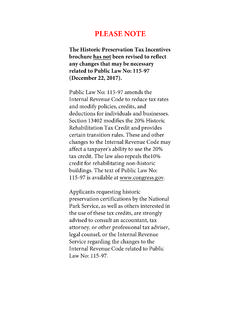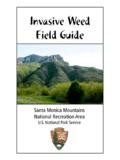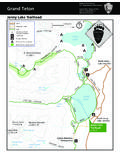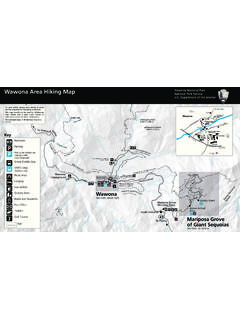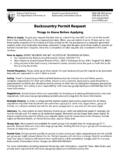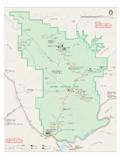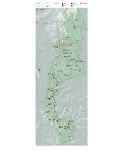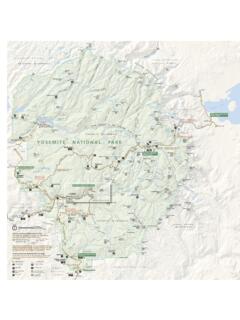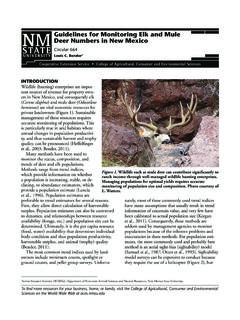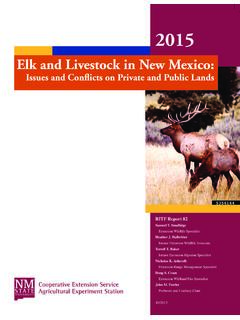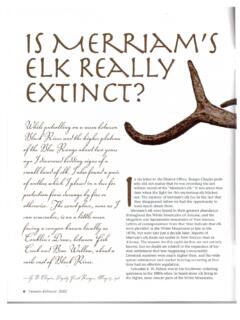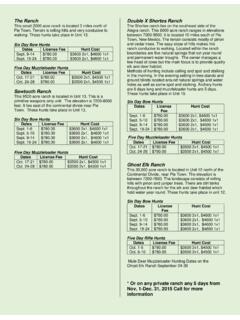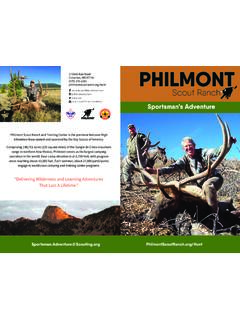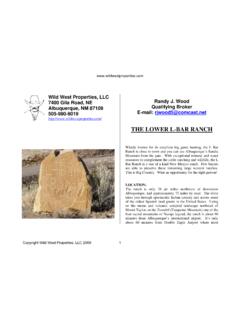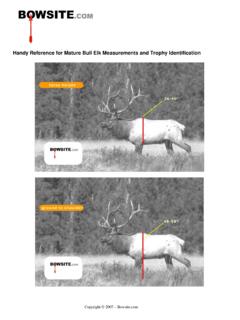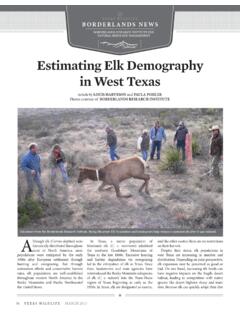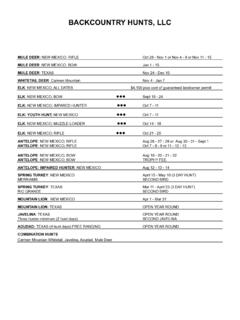Transcription of BACKPACKING IN THE GILA WILDERNESS
1 FOREST SERVICE GILA NATIONAL FOREST U. S. Department of Agriculture WILDERNESS Ranger District BACKPACKING IN THE GILA WILDERNESS Welcome to the Gila WILDERNESS ! You are about to begin an adventure that will challenge your BACKPACKING skills and offer you many wonderful memories. The Gila WILDERNESS is a backpacker s paradise, covering 558,014 acres of unspoiled, mountainous country in southwestern New mexico . The following information will describe the opportunities awaiting you and give tips on how to make your BACKPACKING experience a safe one, while leaving minimal impact on this WILDERNESS .
2 WILDERNESS is a severe mother, bent more on justice than on mercy. Through generations of survival, the plants, animals, and all living things around us have found means of protecting themselves from death by heat, cold, and drought. Note the many varied ways. You, too, must learn the wisdom of the WILDERNESS if you want to be safe within it . Aldo Leopold (1887-1948) AVOIDING THE RUSH You may wish to plan your trip during a time when visitor use is relatively light. The BACKPACKING season begins the first week of March, with spring break. Ideal BACKPACKING occurs in May and June, due to the mild, dry weather, and in September through mid-October. Heavy visitation occurs on the summer holiday weekends (Memorial Day, July 4th and Labor Day).
3 Prepare adequately for the rainy seasons during the winter months, and in July and August. Be aware of hunting seasons: the spring turkey hunting season in late April and early May, the fall deer and elk seasons by bow hunters during the first three weeks of September, rifle hunters in October and November, December and January seasons for bear and cougar. PERMITS AND TRIP ITINERARIES BACKPACKING permits and trip itineraries are not required in the Gila WILDERNESS . However, it is a good idea to leave an itinerary with a friend or family member, so someone will be aware of your intentions. The itinerary should include your point of entry into the WILDERNESS , the location where you will leave your vehicle, a description of your vehicle, (including license number), the route you plan to hike, and the point and date of your return.
4 Be sure to allow yourself enough time for unexpected delays due to weather, etc. When your trip is completed, immediately inform the person who has your trip itinerary to prevent any unnecessary search effort. RESCUE SERVICES Taking care of yourself and accepting responsibility for your actions is an essential part of WILDERNESS travel. By planning carefully and using proper caution, you can make your trip both challenging and safe, and avoid the need for rescue. Unless the situation is life-threatening, search and rescue operations are conducted with pack animals rather than helicopters to avoid the use of mechanized equipment in the WILDERNESS . The Gila Visitor Center can provide information on search and rescue procedures if you need assistance.
5 Being prepared for any eventuality by carrying adequate water, food, clothing, and shelter is the best way to avoid the need to be rescued. MAPS AND OTHER INFORMATION The Gila Visitor Center, located at the confluence of the West and Middle Forks of the Gila River, can provide you with topographic maps and additional information about the Gila WILDERNESS . You may contact the Visitor Center at (505) 536-9461, or at HC 68, Box 100, Silver City, NM 88061. The Visitors Travel Guide and Map of the Gila WILDERNESS is approximately three feet square, printed on both sides. It is excellent for gaining an overview of the entire WILDERNESS , including the trail system. However, its large contour interval (200 feet) omits some significant terrain details.
6 USGS maps minute 1 2series covering all quadrangles of the Gila WILDERNESS are especially good for detailed contour lines, but trail information is out of date. You may also obtain information about the Gila WILDERNESS (West Side) by contacting the Glenwood Ranger District at (505) 539-2481. TERRAIN Many different types of terrain are found in the Gila WILDERNESS . The northeastern and far eastern sections of the WILDERNESS tend to consist of high mesas and rolling hills, ranging in elevation from approximately 5,000 to 8,000 feet and cut by the deep canyons of the Gila River. The vegetation there consists primarily of mixed junipers and pinyon pines, grasses, and at the higher elevations and on northern slopes, ponderosa pines.
7 Vast stands of ponderosas cover the central part of the WILDERNESS in this area. The river canyons offer spectacular cliffs, with mixed hardwoods and ponderosa pine growing along the riparian bottoms. The far western and southwestern sections of the Gila WILDERNESS consist of high mountains, particularly the Mogollon Range, with the highest elevation reaching 10,895 feet. Steep side canyons are common, and vegetation includes Douglas fir, ponderosa pine, aspens and a variety of ferns. The area includes the drainage basins of both Mogollon Creek and Turkey Creek. DANGEROUS FLORA AND FAUNA Learn to identify poison ivy, and distinguish it from the benign box elder tree. Both have compound leaves with three leaflets and normally grow in creek and river bottoms.
8 Some humans react to poison ivy more severely than others. It has the potential to make your trip miserable, and bring it to an irritating end. Rattlesnakes generally live in rocky areas where they can have access to both sun and shade to maintain their body temperature. Rattlesnakes have no interest in backpackers, but react defensively when startled or stepped on. Their bites are rarely fatal to healthy individuals, but unexcited evacuation and treatment is advisable. Learn proper first response procedures before entering the field. Be observant for all wildlife viewing opportunities in the WILDERNESS . Preserve it all. HOT SPRINGS A number of hot springs are found in the Gila WILDERNESS , reminders of the volcanic activity that formed the area millions of years ago.
9 Be aware that hot springs may contain a tiny amoeba (Naegleria fowleri) that can cause a severe and possibly fatal form of meningitis. The organism enters the brain through the nasal passages and initially causes a runny nose, sore throat and severe headache. Do not immerse your head in hot spring water or splash water on your face or into your nose. Public nudity in the Gila National Forest is not allowed. ARCHEOLOGICAL SITES Numerous prehistoric archeological sites are located within the WILDERNESS , remnants of the Native American cultures that once flourished here. Please do not camp on such sites or otherwise enter or disturb them in any way, since these sites are protected by law. Disturbing, removing, defacing, or destroying cultural remains, including pottery shards and projectile points, is a felony.
10 Enjoy the history of the Gila, but please leave it in place for future adventurers to enjoy. PRIVATE PROPERTY There are a number of private land holdings along the East Fork of the Gila River and some of the property owners do not permit hikers to cross their property without written permission. Please check with landowners in advance of your trip or go around these areas. If you have questions about the location or accessibility of private land, please contact the Visitor Center at (505) 536-9461. CAMPING AND FIREWOOD Please help preserve the unspoiled character of the WILDERNESS by traveling and camping on durable surfaces. In high use areas, concentrate activities where vegetation is already absent by using existing trails and selecting already impacted campsites (none are designated).
